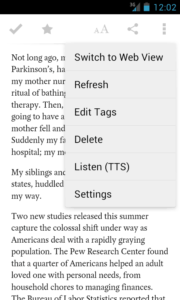
“Hello Nir,” it said to me in its low, monotone voice. “Glad to see you again.”
“Internet, I just need a few quick things for an article I’m writing,” I’d reply. “Then it’s back to work. No distractions this time.”
“Of course Nir, but while you are here, won’t you look at what Paul Graham just wrote?”
“No Internet,” I’d resist. “I’m just here to find some specific information, I can’t be distracted.”
“Of course Nir,” the Internet would say. “But this article about LOLCats addiction is related to your work. Give it a click, won’t you?”
“Interesting.” I’d say hesitantly. “Just a quick read and then it’s back to work.”
3 hours later I would realize the time I’d wasted clicking and curse the Internet for sucking me into its mind vortex yet again.
Ironically, I research and write about seductive technology and yet I struggle to resist its temptations. Much of my work is written for entrepreneurs and designers looking for ways to boost user engagement with their products. The rest of my writing is intended to increase awareness of the habit-forming potential, and at times, unintended consequences, of an increasingly connected world.
But just as having an understanding of how illicit drugs work does not necessarily prevent addiction, I find myself just as susceptible to the illusive pull of the Web. I’ve written about methods for preventing unwanted tech intrusion in the boardroom and even the bedroom, but I found myself struggling with distractions at the desktop, making it difficult to achieve the concentration I needed to work. Indeed, research suggests even small interruptions increase mistakes and degrade performance.
For knowledge workers like me, our work and play display on the same screens. Computers and phones allow us to do our jobs, but also give us instantaneous access to boredom-reliving entertainment. In fact, most of the top 25 website in America sell escape from our daily drudgery.
Online content is habit-forming because it follows what I call the “hooked model“, a four-step user flow composed of a trigger, action, reward, and investment. To end my own bad habit of spending too much time wandering the Web, I had to break the hook, ensuring I didn’t pass through its four alluring steps.
The No Read Rule
Fortunately, I found my antidote in the venom. Ironically, the sites that syndicate my essays — perhaps where you are reading this right now — depend on you not doing what I did, hoping you’ll continue clicking from article to article, racking-up their ad revenue. But to end my own habit, I strung together several technologies to end the behavior pattern that kept me chasing intriguing headlines.
The first thing I did was set a new rule for how I consume content. My rule is to never read online. Of course, I still need to read things I find on the Web, I’ve just time-shifted how I do it.
I signed up for Pocket and installed their browser extension. When clicked, Pocket scrubs the text of what I’d like to read and saves it for later. I made sure the Pocket button is conspicuously visible on my web browser to act as a reminder of my “never read online” rule.
I replaced my old action of reading essays with the new action of saving them for later on Pocket. Thus, my temptation to digest the content wasn’t thwarted, it was satisfied knowing it was safe and sound, waiting for me until later.
Content as Reward

Pocket’s Android app with text-to-speech (TTS) capabilities
Next, I used the Pocket Android app to provide access to the content at just the right time. But here’s the kicker, I do not do the reading. I let the Pocket app read it to me.
The Pocket app’s text-to-speech capabilities are astounding and the HAL 9000 voice of the Internet has been replaced by a British chap with a cheery disposition. Unfortunately, as far as I can tell, the Apple iOS version of Pocket does not have text-to-speech but on my Android the audio plays commercial-free while I’m working out or driving. Listening this way also has some surprising benefits.
I’ve discovered that checking-off articles from my queue is decidedly satisfying, similar to the tiny pleasure of clearing unread messages from my email inbox. Getting through my list of articles acts as a small reward encouraging me to hit the gym more often and saving me the time and temptation of reading at my desk.
The IFTTT Stitch
However, reading at my desk had perks which at first I found lacking in Pocket. For example, I often saved articles to Evernote or shared to social networks like Twitter, but doing so at the gym required too many time-wasting steps. To solve this dilemma, I recruited another brilliant technology. IFTTT, short for IF This Then That, stitches together dozens of apps to communicate easily together. For example, every time I mark an article as a “favorite” in Pocket, it instantly saves to my Evernote account. The IFTTT recipe is available here. When I’d like to share an article I’ve just heard to any number of social networks, all I do is send it to Buffer, which concurrently fires off another IFTTT recipe.
De-Triggered
This simple solution involved no coding and I’m sure you can think of ways to customize these tools for your own needs. My hack is one method for conquering the seductive draw of reading “just one more thing.” On the Web, where distractions and temptations are boundless, we need new tools to help us do our best work (case in point: see my free schedule maker). By replacing my previous actions with a more thoughtful behavior, I’ve increased my productivity and kept HAL’s seductive call at bay.
Disclosures: As of the time of publication, I have no financial or personal interests in any of the companies mentioned in this essay.
Image credit: NirAndFar.com and Apple Ad
Related Articles
- Schedule Maker: a Google Sheet to Plan Your Week
- Habit Tracker Template in Google Sheets
- The Ultimate Core Values List: Your Guide to Personal Growth
- Timeboxing: Why It Works and How to Get Started in 2024
- An Illustrated Guide to the 4 Types of Liars
- Hyperbolic Discounting: Why You Make Terrible Life Choices
- Happiness Hack: This One Ritual Made Me Much Happier
